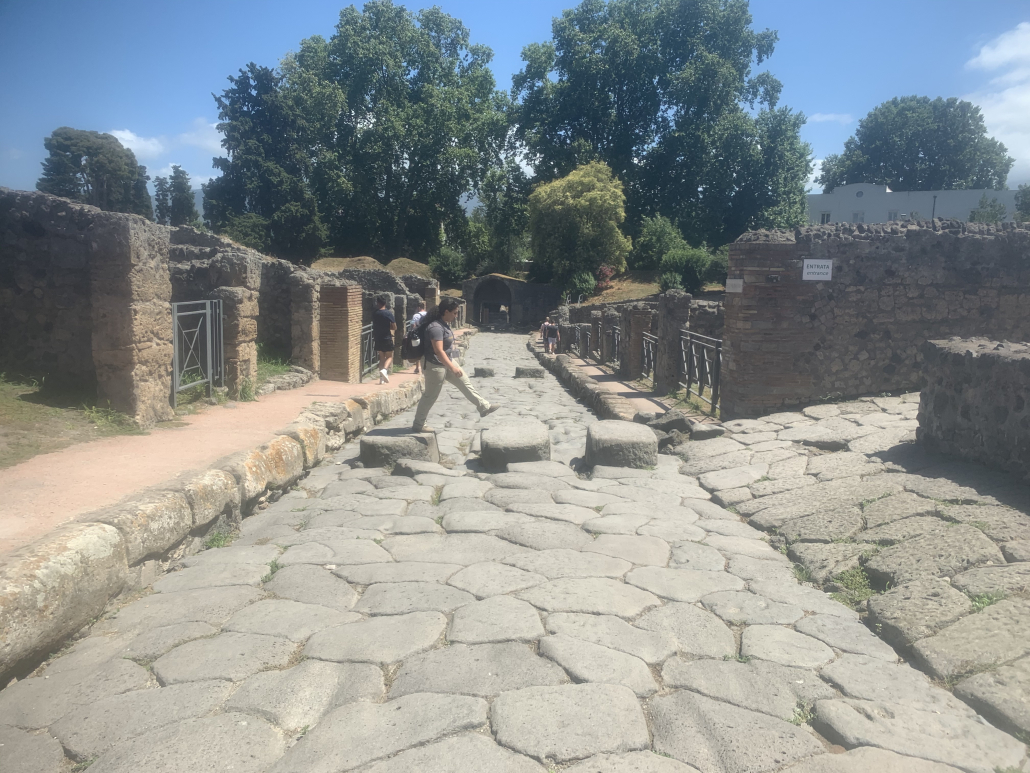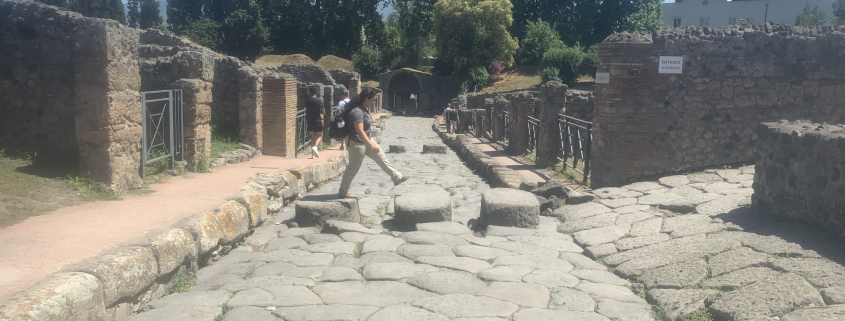Students uncover tomb, conduct fieldwork in Pompeii

When Luis Rodriguez-Perez, Sabrina Dimesa and Lauren Malkoun uncovered artifacts in the tomb of Marcus Venerius Secundio, they felt a mix of emotions.
“It was amazing, some of the artifacts that came out,” said Rodriguez-Perez, a senior majoring in archaeology and history. “But it’s also really crazy and really kind of ethically challenging, because as cool as it is to uncover artifacts a few thousand years old, you remember that these were like human beings and people who actually lived.”
Rodriguez-Perez, along with Dimesa, a junior majoring in economics, and Malkoun, traveled to Pompeii, Italy, this past July with ArchaeoSpain, a company that allows students to join archaeological trips and digs. They were paired with the “Pompeii: the Archaeology of Death” project and studied funerary archaeology.
Malkoun, a sophomore majoring in archaeology, had previous experience with ArchaeoSpain, from when she joined an excavation trip to Spain in high school, which jumpstarted her passion for archaeology. Malkoun hopes to participate in more excavations in the future, with the goal of pursuing a doctorate degree in archaeology.
“You connect with the site on a whole other level,” Malkoun said. “You don’t realize it until after when you’re like ‘Oh whoa, I know a lot of things.’”
During the trip, the three worked with 13 other archeology students from around the world, in addition to professional archaeologists. From 6 a.m. to 5 p.m. on weekdays, participants worked on site in the Porta Sarno Acropolis — located outside the Eastern gates of Pompeii — or in a lab inside the gates, documenting their findings. Weekends were spent on excursions exploring other archaeological sites in Italy, Malkoun said.
During the excavation of the Marcus Venerius Secundio mausoleum — created to commemorate a former slave and priest — students assisted in digging and documenting findings from the site. Before the diggers uncovered the tomb and exhumed the body, a small hole was made to insert a camera to help anticipate the findings and components of the tomb.
Inside the tomb, they discovered not only Secundio’s body, but also several urns — one fully intact that was made of glass and enclosed in a metal protective casing. According to Malkoun, archaeologists are analyzing the urns with new techniques more deliberately, as opposed to conventional methods of dumping their contents.
Secundio’s tomb also featured inscriptions in Greek, despite its location in Rome, where the majority of people spoke Latin aside from a few rich citizens, Rodriguez-Perez said. Secundio organized theater performances while he was alive, and the inclusion of Greek inscriptions suggested that theater was performed in Greek.
“This was an important finding … because this is confirmation that Greek was a well enough understood language to have been performed outdoors,” Rodriguez-Perez said. “I think it’s the first [inscription] of its kind.”
Lynn Dodd, associate professor in the practice of religion and spatial sciences and director of the Archaeology Research Center, has taught Rodriguez-Perez and Malkoun before and encouraged both of them to go to Pompeii.
“I thought that would be an exceptional opportunity for them. I thought that it would be great fieldwork training,” Dodd said. “It’s important for archaeologists to learn field methods and to get hands-on experience.”
Malkoun said she hopes to put the lessons around empathy, respecting the past and cherishing archaeologists’ work into practice in her career.
“You can’t separate people from science because it’s about people, and so I think it’s important to remember, as we go through this process, as we continue to talk about the finds at Porta Sarno and Pompeii, to remember Marcus Venerius Secundio and his family, we’re all people too,” Malkoun said.

